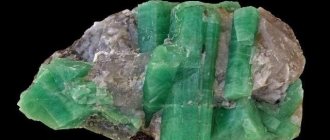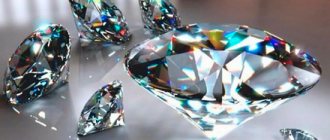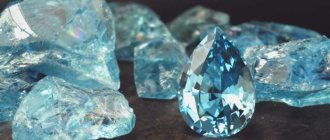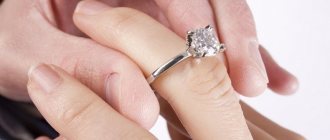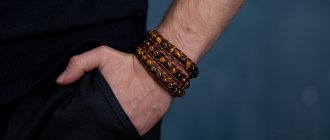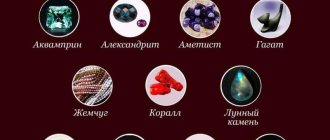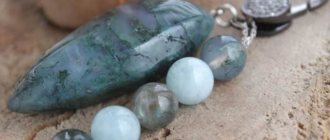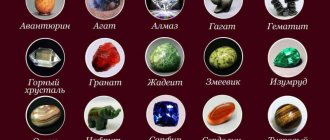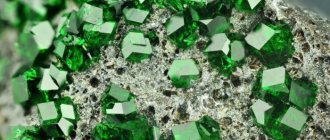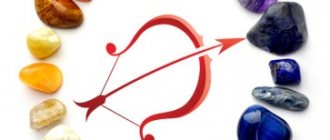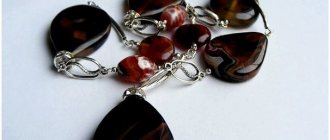Interesting facts about the Mediterranean Sea
The ancient Mediterranean Sea had many names:
- "Akdeniz" or "White Sea" (Turks);
- "Our Sea" or "Inland" (ancient Romans);
- "Sea of Sunset" (Babylonians).
- “Great Sea” (Hebrew הַיָּם הַגָּדוֹל, Ha-Yam Ha-Gadol).
This sea includes in its expanses many small seas and various islands, which in ancient times were independent states.
The Mediterranean Sea is famous for the habitat of such an animal as the “sponge”, which later received the name “toilet sponge”, since the dried skeletons of this inhabitant were used as washcloths.
In 2016, Spanish archaeologists discovered a ship from the Roman Empire that sank more than 1.5 thousand years ago at a depth of 70 m.
In the Strait of Messina, you can see a mirage.
What will happen if this Great Basin is drained? You will find the answer to this question if you watch this entertaining film (published by I. Garkalikov)
How to distinguish from a fake
In order not to buy a fake instead of Larimar, you need to study the document accompanying this copy. It should contain:
- designation of the place of production (Dominican Republic or Caribbean country);
- the name of the mineral must be indicated without quotation marks.
The description of characteristics should not contain the words “remanufactured”, “pressed”, etc.
When choosing a mineral, you need to pay attention to its surface. In natural stone it is heterogeneous and unique. Counterfeits made of plastic, porcelain, and glass are distinguished by uniformity and repeatability of the pattern.
The transition between sections is clear in the imitation, while in natural larimar it is blurred.
Larimar stone from the Dominican Republic is very expensive; it is not sold in jewelry departments.
Varieties
There are quite a lot of them; now in the production of jewelry, 10 are most often used. These are baroque - pearls with an irregular shape. May resemble a pear, disk, drop or cylinder, even the outlines of animals or their body parts. Baroque pearls also have a ribbed pattern on the surface. Soufflé pearls are large in size and are obtained using a special technology: by “inflating” the oyster bag.
Keshi, kasumi and akoya are Japanese pearls. The first option is valued low, the second is highly valued, since it is specially grown on the lake and has excellent properties. Akoya, on the other hand, is born in bivalves of the same name and is distinguished by its regular spherical shape and clean, light colors.
Rare, mother-of-pearl types include blister, conch, melo, cohog, and with mother-of-pearl - abalone. Abalone “ripens” in a single-vave mollusk that lives on the Mexican or Californian coast, as well as Australia, Thailand, Korea, South Africa, and New Zealand. They come in the shape of shark teeth, horns, and have a wide range of shades.
Artificial pearls
The spread of artificial pearls is associated with the high cost of real ones:
- In the 15th and 16th centuries, among those who could not afford natural pearls, “Roman pearls” - a glass ball with paraffin inside - were especially popular.
- A little later, they learned how to make “pearl essence,” which is a special composition based on fish scales. Glass balls were dipped into it several times, sintering them in a furnace after each dip. As a result, the balls received a pearlescent color and shine.
- In the second decade of the 20th century, a new shell pearl technology appeared in America. Its essence is the imitation of pearls using mother-of-pearl cores coated with varnish.
Imitation pearls are an excellent option for those who want to have pearl jewelry, but absolutely do not have the money for it. But unscrupulous jewelers, in pursuit of increasing profits, try to sell fakes under the guise of natural pearls. Therefore, it is important to be able to distinguish imitations from originals; how to do this is described in detail below.
History and secrets of the Mediterranean Sea
The modern Mediterranean Sea is a remnant of the ancient Tesis basin, which once occupied the territory of Europe, North Africa, southern and western Asia. Over many millions of years, the strait connecting to the ocean was repeatedly closed and opened. Subsequently, the sea dried up and could no longer fill to its former size. The modern relief was formed due to changes in the Earth's climate.
The Mediterranean territory was one of the first to be inhabited by humans, and it was here that writing was first born, many great states were formed, and world religions were born.
In 1833, an Englishman, a geologist by profession, Charles Lyell, began to study this ancient sea.
You can watch an interesting film (published by Slava Yanko) about the origins of the Mediterranean civilization here
Educational film in English about the Mediterranean Sea
Coastal Features
The northern coast has a complex terrain: the shores are high, rocky and steep with large bays.
The southern coast is flat. Mountains stretch from the western part, and in the east they disappear and the coast becomes smooth and sandy (almost deserted).
The total length of the Mediterranean coast is 46 thousand km. Interestingly, this area of water would easily be enough to swallow Western Europe!
6.1 Israel's sea coast
The coast of Israel is washed by the western waters of the Mediterranean Sea. The Mediterranean territory extends from Israel's northern border to the Gaza Strip. Also on the coast there is a plain called “Coastal”, stretching for 187 km from Lebanon to the Gaza Strip. The plain is divided into cultural and geographical areas and has many sandy beaches.
You can read more about the plain on the Wikipedia pages https://ru.wikipedia.org/wiki/Israeli_coastal_plain
The Mediterranean coast consists not only of plains and beaches, but also rocky shores and reefs.
6.2 Port cities of Israel
- Akko.
- Ashdod is the city-industrial center of Israel. The largest port is located here, meeting more than 50% of cargo from all over the world.
- Tel Aviv Port or Old Port , located in the northwest of the capital. It was founded in 1936 and operated until 1965, after which its functions were transferred to the port of Ashdod. Now the port territory is a tourist area.
- Haifa Port is the second largest port.
- Jaffa is the oldest Israeli port (over 3000 years old). Currently merged with the port of Tel Aviv.
Application of minerals
Aquamarine, due to its instability to sunlight, is subjected to special processing, after which the mineral is used to make various jewelry. Rings, brooches, bracelets look very impressive with it. It is the transparent variety of stone weighing 10 carats or more that is most valued by jewelers.
Lapis lazuli is not called the stone of heaven for nothing. Due to its color, it is highly sought after in the jewelry industry. If it is inlaid in gold or silver, the cost of the product increases significantly. These beautiful blue stones are also ornamental - they are used to make ornaments.
Larimar has also found its application in jewelry. The mineral is used to create designer jewelry, which becomes a family item and is passed on from generation to generation.
Guide to Sochi pebbles: Gneisses, quartzites, basalts and golden sand
In addition to standard basalts and limestones, corn cobs and dead jellyfish, the Sochi surf can bring semi-precious stones to your feet - red and yellow jaspers. Red, hematite ones enter the sea from the upper reaches of the Mzymta, yellow ones - along Sochinka from the Plastunsky highlands. In the 30s of the last century, gold was panned on the coastline within the city limits - a whole team worked. In the second half of the twentieth century, the mines were closed as unprofitable, but the fact remains that if in the village of Magnituri near Batumi people bask on healing magnetic sand, then in Sochi they bask on gold.
SCAPP asked geologist Alexander Trenbach to select and label rock samples from common Black Sea pebbles on one of the city's typical beaches. The educational scientific laboratory assisted in a more detailed study of the samples and obtaining images from a digital microscope.
Limestone
This sedimentary rock is fine-grained; depending on the impurities, the stone can be pink, white, or gray, sometimes black, red, or even yellowish. It is widely used in construction, the chemical industry - lime is obtained from limestone, and in general it is a very useful material for agriculture, metallurgy and other industries.
Sandstone
Another sedimentary rock popular at the seaside, granular and cemented, is considered a frequent companion of gold. Due to impurities it can be yellowish, brown, black and green. Used mainly in construction. The largest sandstone deposit in Sochi is located in the village of Soloniki, where quarrying is underway.
Mudstones and siltstones
Rocks that are intermediate between clays and sandstones. Dense, layered, suitable for the production of expanded clay, which, by the way, is also produced in Sochi, at the building materials plant. Mudstones are gray. Siltstones can be gray, black, green and red.
Gravelite and conglomerate
Sedimentary rocks made of large particles of various origins cemented by clay or other materials. Durable stones are used as building material.
Roofing slate
Sedimentary, clayey rock that can be easily split into fairly strong and thin layers of 3–5 cm. In Sochi, in the upper reaches of the Mzymta, a shale mine operated for the extraction of natural tiles, an environmentally friendly and reliable material.
The magical properties of pearls
Water itself is a powerful element, and anything born and raised in it receives special magical powers. Pearls can:
- Protect their owners while traveling on water.
- To relieve all kinds of suffering - the consequences of betrayal, disappointment and unhappy love, to cleanse the soul of its owner from all this, opening it to new impressions.
- Protect from negative influences of any kind.
There is an opinion among magicians that if a pearl becomes cloudy, darkened or cracked, it means that the person has been subjected to a negative influence from the outside. Another possible reason for the stone to deteriorate on its own is the risk or initial stage of a serious illness.
- Grant prosperity in family life.
- Rejuvenate both the body and soul of its owner.
- To bind one person to another with strong fiery feelings.
- Feed energetically (or, conversely, suck energy).
Wearing pearls is indicated only for people with a strong character and a pure soul. Otherwise, pearls will not help, but will even prevent them from carrying out their “bad” deeds.
- Help a person achieve what he wants, make him more respected and successful.
- Attract wealth into the life of your owner, make him financially independent, but on condition that he does not forget to share with those in need. Otherwise, the pearl will also quickly take back what it gave.
The process of pearl formation
Natural processes are sometimes striking in their simplicity and complexity at the same time. This is how pearls are formed. On the one hand, the production of mother-of-pearl by a mollusk is its protective function, on the other hand, it is a way to create stunning jewelry. In more detail:
- The mollusk lives in its shell and develops.
- A certain irritant gets into its confined space, which can harm the health of the mollusk. It could be a grain of sand, a shell fragment or a piece of seaweed.
- The mollusk begins to defend itself - it produces nacre and covers the irritant with it layer by layer.
Thus, inside each natural pearl there is a grain of sand, a shell fragment or other tiny particle of marine debris.
The longer the pearl sits in the shell, the larger it will be when removed.
